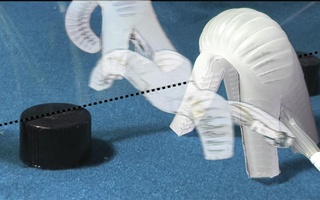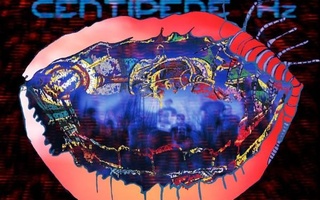A photograph of a centipede-inspired robot won two Harvard affiliates an “Honorable Mention” in the 2010 International Science and Engineering Visualization Challenge last month.
The photograph was developed by School of Engineering and Applied Sciences graduate student Katie L. Hoffman and SEAS professor Robert J. Wood.
Science Magazine and the National Science Foundation awarded Hoffman and Wood in the photography category for their “centipede millibot.”
Hoffman said the competition asked contestants to take a picture that could convey an interesting scientific idea or device to the general public. She said she used a digital SLR camera to take the photograph, which contained no special effects or additional editing.
“I just spent a lot of time trying to take a good picture of the robot because I thought it was a pretty picture,” Hoffman said.
The photo includes a 12-legged, segmented robot perched next to an only slightly smaller penny, atop a reflective surface. The top view shows the mechanical devices controlling the movement of the legs, each of which is engraved with the words “Harvard Microrobotics Lab” in 150-micrometer-wide text.
The reflection shows the connections between the segments, which are made out of carbon fiber, a flexible material used to create “soft” robots.
Hoffman said she has worked on the “centipede millibot” for the past year and a half as part of her research in the Harvard Microrobotics Laboratory, which focuses on engineering on a small-scale. Hoffman said she uses the centipede-like robot to study the locomotion of centipedes.
Wood, an associate professor of electrical engineering, serves as the administrator to the Microrobotics Laboratory. Hoffman said he helped her assemble the robot and encouraged her to enter the contest. “I believe there is great value in the ability to convey the story of a research project visually and in a manner that is both accessible and exciting,” Wood said. “Katie [Hoffman]’s photo describes her device in a way much more effective than words.”
In 2009, SEAS researchers at the Aizenberg Biomineralization and Biomimetics Lab won first prize in the same challenge for their photo entitled “Save Our Earth, Let’s Go Green,” which depicted tiny “fingers” made out of polymer hairs cradling a tiny green sphere representing the Earth.
—Staff writer Melanie A. Guzman can be reached at melanieguzman@college.harvard.edu.
Read more in News
Harvard to Officially Recognize Naval ROTCRecommended Articles
-
The Most Annoying Viral Distractions of 2010The Arts designers say what distracted them this year.
-
 Researcher Presents on Flying Robots
Researcher Presents on Flying Robots -
 Raucous ‘Real Steel’ is an Arresting Robotic Romp
Raucous ‘Real Steel’ is an Arresting Robotic Romp -
 Robot Mimics Squid Movement
Robot Mimics Squid Movement -
 Robot Lovin': Could It Be the Future of Sex?
Robot Lovin': Could It Be the Future of Sex? -
 Animal Collective Clatters, Strums, and Overwhelms
Animal Collective Clatters, Strums, and Overwhelms













